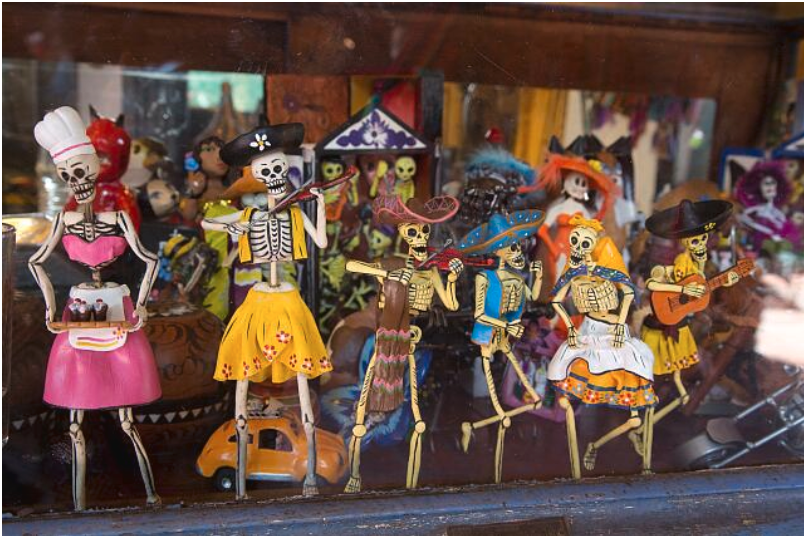Teach This Poem, though developed with a classroom in mind, can be easily adapted for remote learning, hybrid learning models, or in-person classes. Please see our suggestions for how to adapt this lesson for remote or blended learning. We have also noted suggestions when applicable and will continue to add to these suggestions online.
Look closely at the image of Olvera Street.
The following activities and questions are designed to help your students use their noticing skills to move through the poem and develop their thinking about its meaning with confidence, using what they’ve noticed as evidence for their interpretations. Read more about the framework upon which these activities are based.
-
Warm-up: Look closely at the image of Olvera Street. What do you notice? Look again? What else do you see? What does this make you think? Why?
-
Before Reading the Poem: Watch this video of the song “Remember Me” from the film Coco. What stood out to you from the video?
-
Reading the Poem: Read the poem “November 2: Día de los muertos” by Alberto Ríos silently. What do you notice about the poem? Annotate for any words or phrases that stand out to you or any questions you might have.
-
Listening to the Poem: (enlist two volunteers to read the poem aloud): Listen as the poem is read aloud twice, and write down any additional words and phrases that stand out to you.
-
Small-group Discussion: Share what you noticed in the poem with a small group of students. Based on the details you just shared with your small group and the resources from the beginning of class, how does the poem compare to the video and the image? What might this poem make you want to know more about?
-
Whole-class Discussion: How does the speaker feel about Día de los Muertos? What makes you say that? What do you feel has shaped your ideas and beliefs about life and death? Día de los Muertos is celebrated just after Halloween, but it is its own unique holiday. Based on the poem, what is important about this holiday?
-
Extension for Grades 7-8: Choose to research a tradition from your own culture or learn more about Día de los Muertos. Create a short presentation to share what you learned.
-
Extension for Grades 9-12: Continue learning more about Día de los Muertos by reading this blog post about José Guadalupe Posada, an artist credited with much of the Dia de los Muertos style. Choose one of Posada’s images and write a story about the calavera in the image.
“Schools can use Día de los Muertos as a time to teach students how to be culturally sensitive, discover their ancestral traditions related to death, and to support the Latinx community today. They can also help students appreciate the holiday for its uniqueness and clarify the common misconception that it is simply Mexican Halloween.” Read more about Día de los Muertos and how to sensitively teach it in the classroom with this blog post from the PBS Teachers Lounge.

